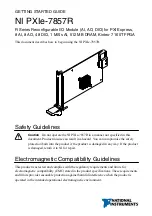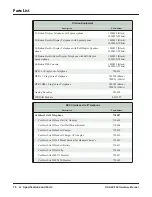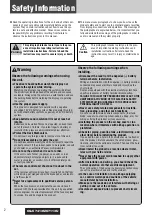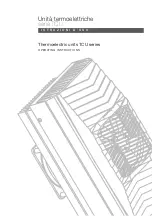
HWM-H-IOM (10/14)
Page 13
C. Water Quality
Water quality in hydronic systems is important to the life and efficiency of the system. Water of
poor quality can cause a decrease in heat transfer ability and cause leaks.
Ensuring proper quality water is a key step in the installation of the hydronic water module
(HWM) and circulating water system.
Water quality parameters and the recommended ranges are listed in Figure 5b. The antifreeze
manufacturer’s water quality requirements take precedence over the ranges listed in Figure 5b.
Parameter
Optimal Conditions
Comments
Glycol Freeze
Protection
20% to 50%
Below 20% can promote the growth of bacteria.
Concentrations higher than 50% will dramatically reduce the
heat transfer ability. Glycol seepage can occur at o-rings
and seals.
Corrosion inhibitor
Molybdate inhibitor
or
Nitrite inhibitor
100-150ppm
800-1200ppm
Without the addition of Nitrite or Molybdate inhibitors,
corrosion of the metallic components will begin and
eventually lead to leaks.
pH
9-10.5 pH units
A pH below 9.0 will allow the corrosion of steel and above
10.5 will allow the corrosion of brass and copper.
Conductivity
700-3200µS/cm
Conductivity above 3500µS/cm will cause the water to
become physically abrasive and damage the o-rings.
Addition of chemicals to the water will raise the conductivity.
Hardness
100-300ppm
Artificially soft water can be aggressive to the system. The
use of unsoftened water is recommended. Do not use
distilled or purified water.
Bacteria/Mold
No Bacteria or
Mold
The growth of bacteria will cause erosion of seals and the
deposit of a bacterial slime will clog the system. Bacteria can
attack the o-rings and cause premature failure. Glycol above
20% will kill any bacteria.
Figure 5b. Hydronic System Water Quality Parameters
IMPORTANT
THE SERVICES OF A QUALIFIED WATER TREATMENT SPECIALIST
ARE REQUIRED FOR THE APPROPRIATE WATER ANALYSIS AND
TREATMENT.
IMPORTANT
THE SERVICES OF A QUALIFIED WATER TREATMENT SPECIALIST
ARE REQUIRED FOR THE APPROPRIATE WATER ANALYSIS AND
TREATMENT.
IMPORTANT!
Always follow the propylene-
glycol manufacturer’s instructions
concerning the water quality specifications before filling the water
circulating system.













































